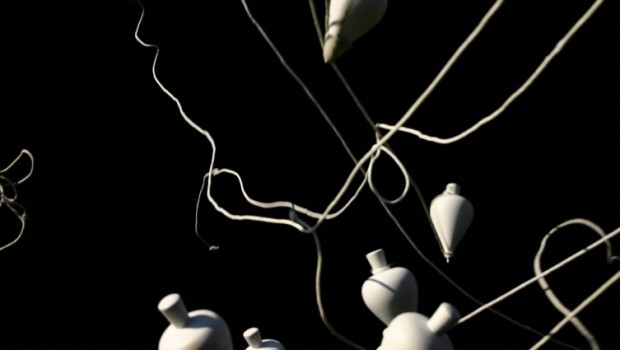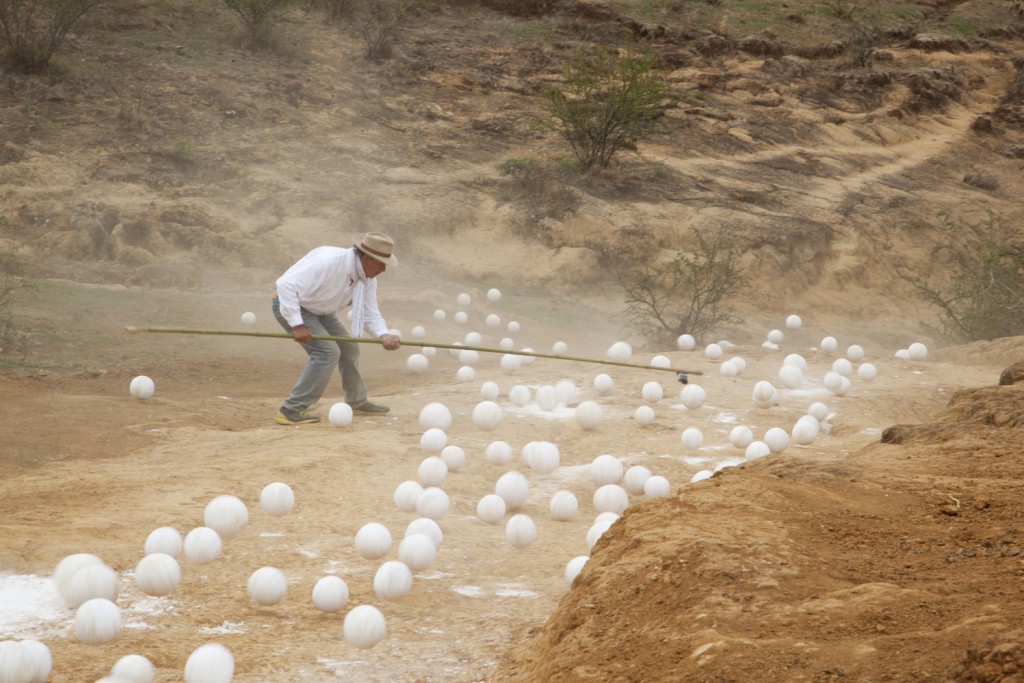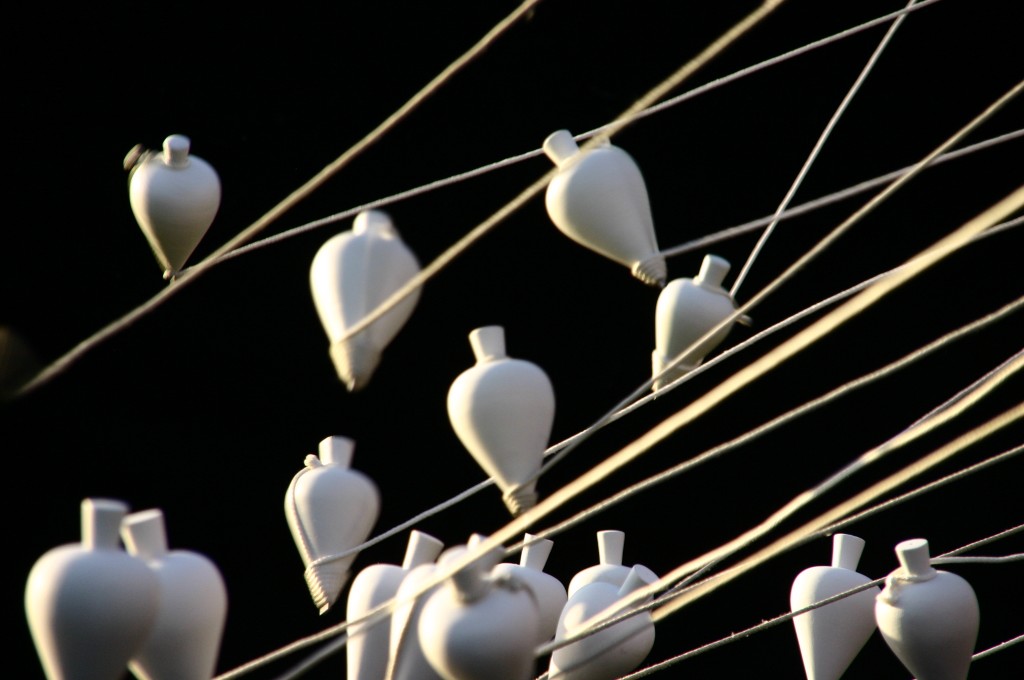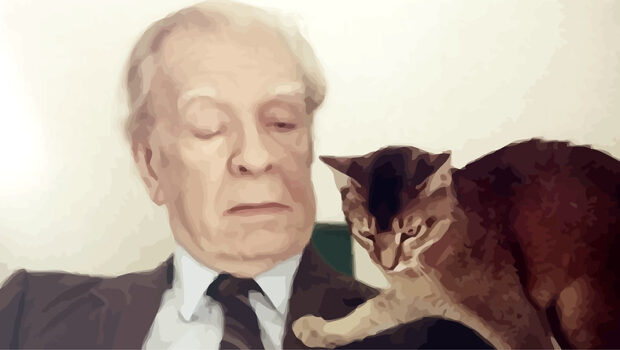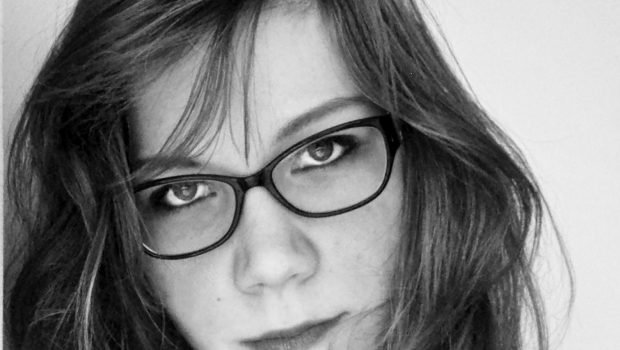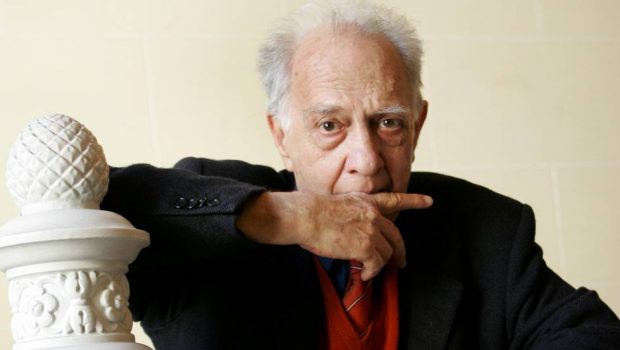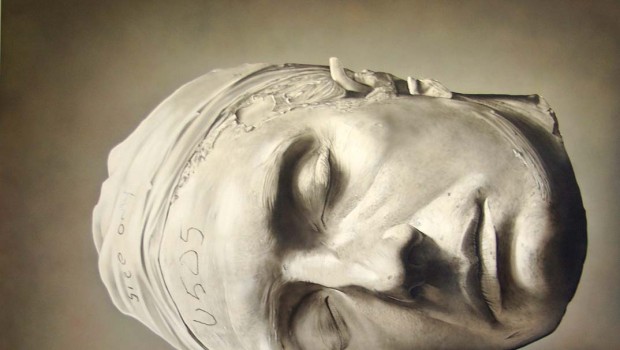Three Videos by Miguel Ángel Ríos
Fernando Castro R.
In the early 1970s, a small book by Rudolph Arnheim titled Entropy and Art: An Essay on Disorder and Order came into my possession. Prima facie, the notion that entropy —that very strange concept of thermodynamics— could have something to do with art, the most expressive of human endeavors, is rather puzzling. To be sure, even the scientific application of the two laws of thermodynamics to spontaneous processes in the physical universe is unintuitive, thus the additional leap into the aesthetic realm tickled my curiosity.
The laws of thermodynamics are not an easy fit in the corpus of physics. The word itself refers to the transfer of heat energy, and it is in that area where its clearest scientific examples reside. Mutatis mutandis, these laws state that spontaneous (irreversible) processes in the universe occur because they increase entropy1 and decrease enthalpy2. Heat flows from warmer to colder areas and not the other way around. So at room temperature, your hot coffee gets cold if you let it sit, instead of getting hotter. Late in the 19th century, however, the concept of entropy became mired down with that of disorder. At that point, entropy and enthalpy left the strict dominion of science and crossed over to other linguistic usages that rendered them more metaphorical.
But how do these meditations concern the video art of Miguel Angel Ríos? In the videos I am about to reflect upon, order and disorder, potential and kinetic energy are constitutive of the works and, ultimately, to be considered among the metaphorical interpretations we give them vis-à-vis life in general and the human condition in particular.
Some of the most compelling works by Ríos involve a great deal of human participation. In them, Ríos himself plays a role akin to that of a conductor of many musicians. The end result, however, is rewarding to the artist who concocted it, as well as to many others who made it possible in a material sense. For the production of the video Piedras blancas (currently being shown at Sicardi Gallery), Miguel Angel Ríos and twenty of his assistants manufactured 3,200 balls out of a wire structure and a cement cortex that was later painted white. Rios’ assistants transformed the amorphous cement and wire into the perfect shape of a sphere, defying the entropic forces of nature that would have never spontaneously organized matter in such a way.
Many of the 3,200 balls of Piedras Blancas were built to be shock-resistant in order to withstand the precipitous fall, while others were designed to burst on impact. The next step of production was another non-spontaneous part of the process, because the potential energy (enthalpy) of the white balls was increased by bringing them to the top of a mountain. Then, in a continuous flow, the balls were released, and their spontaneous downhill rush towards a state of lower potential energy were tracked by seven video cameras. The cameras were placed along the route the balls were predicted to travel in order to record their migration, as well as the natural surroundings. Many were lost along the way, scattered in the landscape they caressed, or burst into smithereens as they hit a rock, or each other. Yet a group of them followed a path that landed them in a final resting place at the foot of the mountain.
This description of what happens in the video itself is not devoid of metaphor, but a whole avalanche of balls rolling downhill suggests a plethora of symbolic interpretations. Gravity propels their fall as if it were one of those unstoppable forces that cause war, tsunamis, hunger, forest fires, epidemics, mass migrations, religion, earthquakes, poverty, hurricanes, greed, flooding, disease, etcetera. In 1970, a 10,000 metric ton huayco (avalanche) of ice and rock buried the Andean town of Yungay, killing 20,000 people. In 1983-1985, a famine caused by drought killed 400,000 people in Eritrea and Ethiopia. In 2015, widespread warfare caused the mass migration of millions of refugees from the Middle East. By whatever means you measure it, these tragedies resulted in greater disorder, failing to attain any satisfactory state of equilibrium.
Let’s backtrack. In 2007, Miguel Angel Ríos had an exhibition at the Blaffer Gallery (currently the Blaffer Art Museum, thanks to an architectural fiat). The mise en scène of the video works was accomplished under the tenure of former director Terrie Sultan. On the Edge was shown on a synchronized double-screen video installation, and Aquí on five screens. These were two of several videos Ríos made about spinning tops. In On the Edge, white tops spin on a black background, and black tops spin on a white background in a choreography that could not have been more perfect if the “dancers” were willful entities. The video’s soundtrack was the grinding of the tops’ points as they marked the surface of the stage. Needless to say, the driving force of the tops’ spin was not gravity, nor any other natural force, but the dexterity of the 80 Mexican top spinners Ríos recruited by going from town to town with a megaphone. Thanks to their skill and aesthetic sensitivity, the tops spin precisely and hypnotically. At times, they remain almost motionless while at others, they dart across the stage like Nureyev or Baryshnikov before disappearing into darkness.
Although one is tempted to view the spinning tops as two, three, or up to a dozen dancing all at once, their movement is more enigmatic than a dance because it follows the laws of angular momentum and inertia. That tacit realization makes their performance even more awe-inspiring and sublime. The artistic choice of black-and-white tops —antagonistic, albeit elegant colors— renders their interaction suggestive of many a human conflict: black versus white, dark versus light. On the edge alludes to death coincidentally, as an inevitable part of a trompo’s diminishing spin, but this is not the point of the work. A top can be restrung and given new impetus. Death, on the other hand, is the theme of A morir (“to death”, or To the Bitter End). Here only black tops spin on what appears to be a 3×3 chalk grid on the floor, reminiscent of popular top battles. Tops finish their spin (or “die”) by losing momentum and slowly stumbling into a clumsy demise. They also “die” by being bumped by a new “dancer.” In actual matches, one player uses his top to “kill” his rival’s by violently striking the prostrate top with its tip. The impact often cracks the vanquished top in half. In contrast, the tops of A morir die a natural death and in the end, they lie strewn across a field that is more mathematical than warlike.
Rios’ other videos may deserve just as much attention. I have focused on three —On the Edge (2005), Piedras Blancas (2015), and A Morir (2005)— because they fit our cause. They share movement and conflict, an initial impulse with human intervention, an ending through loss of momentum and increased chaos, and a subtle way of referring to existence and strife. As Arnheim concluded in Entropy and Art, after engaging in the more arcane aspects of thermodynamics: “Now the work of art also represents a state of equilibrium, of accomplished order and maximum relative entropy, and there are those who resent it. But art is not meant to stop the stream of life. Within a narrow span of duration and space the work of art concentrates a view of the human condition…” 3
Footnotes:
1. A thermodynamic quantity representing the unavailability of a system’s thermal energy for conversion into mechanical work, often interpreted as the degree of disorder or randomness in the system.
2. A thermodynamic quantity equivalent to the total heat content of a system. It is equal to the internal energy of the system plus the product of pressure and volume.
3. Entropy and Art: An Essay on Disorder and Order. Berkeley: University of California Press, 1971.
 Fernando Castro is an artist, critic and curator. He studied philosophy at Rice University as a Fulbright scholar. He is a member of the art board of FotoFest and of the advisory board of the Houston Center for Photoography. He is a contributing editor of Aperture Magazine, Art-Nexus, Literal, and Spot. Last year he delivered the lecture “Elian” at the University of Cambridge, England.
Fernando Castro is an artist, critic and curator. He studied philosophy at Rice University as a Fulbright scholar. He is a member of the art board of FotoFest and of the advisory board of the Houston Center for Photoography. He is a contributing editor of Aperture Magazine, Art-Nexus, Literal, and Spot. Last year he delivered the lecture “Elian” at the University of Cambridge, England.
Posted: October 28, 2015 at 9:53 pm


